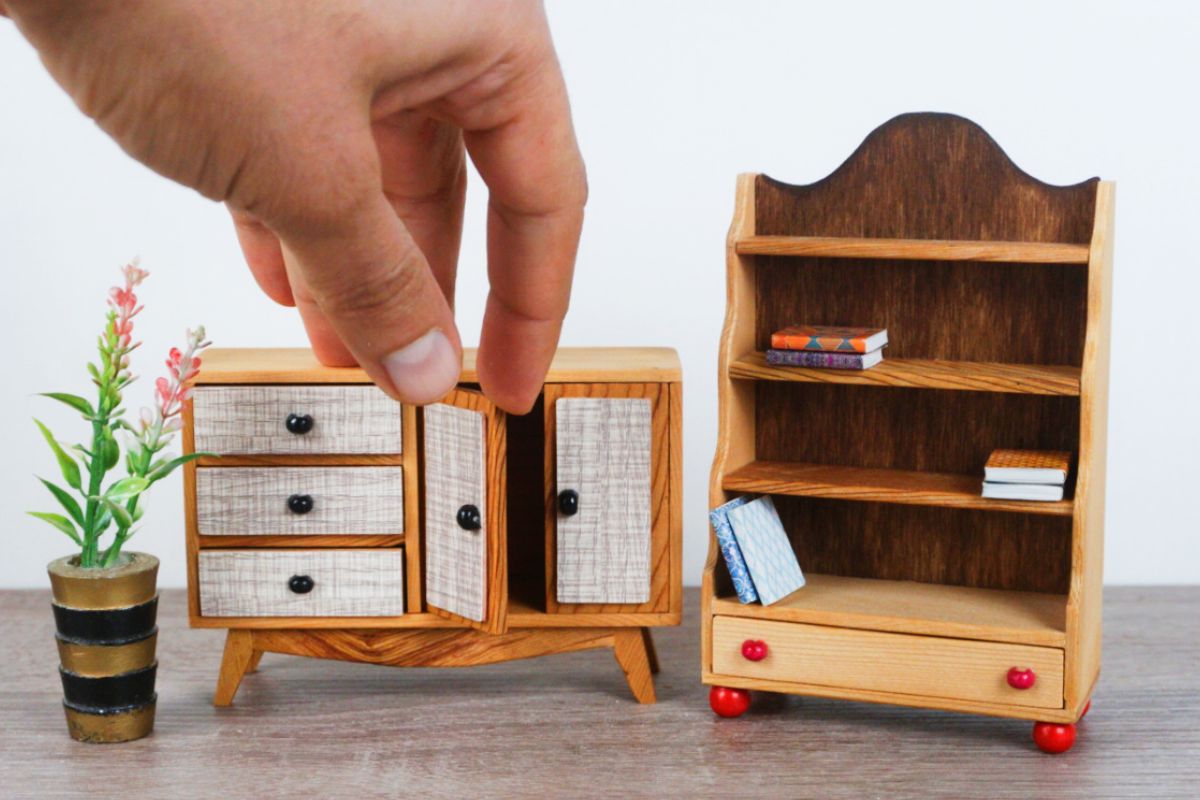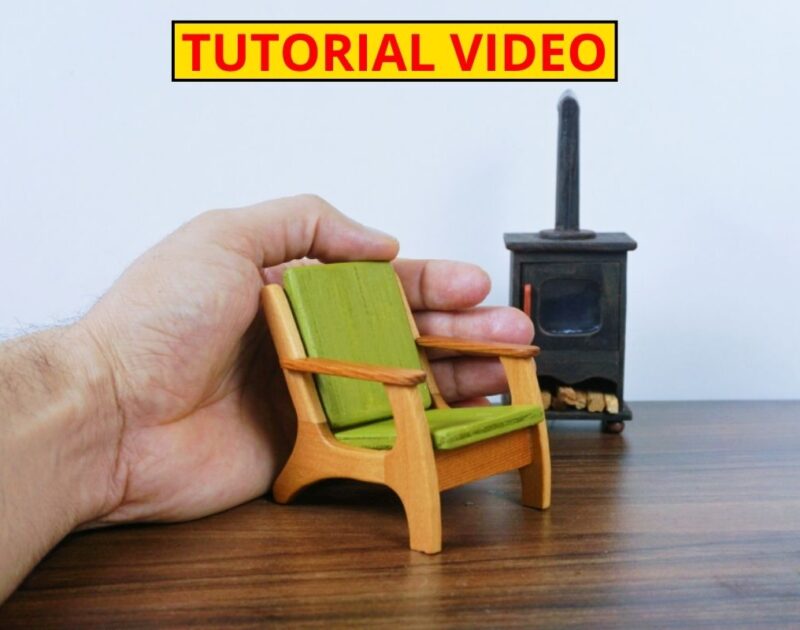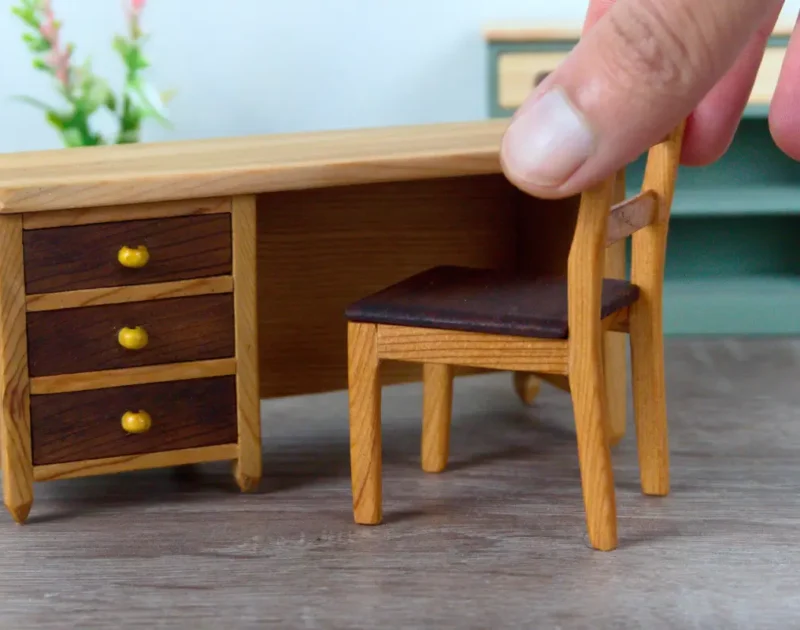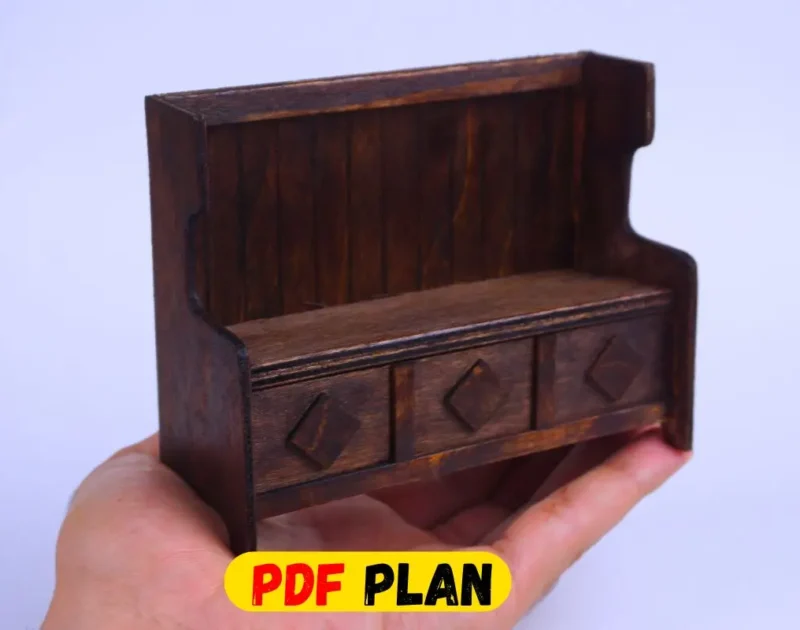If you’re passionate about crafting miniature furniture or dollhouse rooms, choosing the right wood thickness is one of the most important steps to achieve professional results. As someone who has been creating wooden miniatures for years, I’ve learned that wood quality and the right thickness can make the difference between a fragile, unstable piece and a durable, realistic miniature.
I rely on a set of trusted tools that help achieve professional-looking results in miniature woodworking:
- Sandpaper – to smooth edges and prepare surfaces.
- Transparent brown stain – to bring out the natural beauty of the wood grain.
- Wood oil – to protect and enhance the finish.
- Jeweler’s saw – for delicate and precise cuts.
- Small table saw – to speed up straight cuts.
- 12V mini sander – for quick, clean smoothing.
In this article, I’ll share my personal experience and professional advice about the ideal wood thickness for miniature making. Whether you’re a beginner or an experienced crafter, these tips will help you select the right materials for your scale and project.
The Importance of Wood Quality in Miniature Making
Wood is the foundation of most professional miniatures. Its texture, strength, and natural look make it perfect for realistic dollhouse furniture. Good-quality wood doesn’t splinter easily, accepts sanding smoothly, and allows you to apply paint or varnish evenly.
For miniature work, I always recommend cedar, basswood, or birch plywood because they are lightweight yet durable. These woods are easy to cut using a mini table saw or a jewelry saw, and they maintain their shape without warping.
The quality of your wood directly affects how realistic your final piece looks. Smooth grain helps reproduce real-life furniture details, while stable wood thickness ensures that the miniature parts fit together precisely.
Wood vs. Cardboard – What’s the Difference?
Many beginners wonder if they can use cardboard instead of wood. While cardboard can work for smaller scales like 1:24, it has several limitations compared to wood.
- Wood: Strong, realistic texture, and easy to sand and paint. It gives your miniature furniture a long life and professional appearance.
- Cardboard: Lightweight and inexpensive, but not suitable for working doors, drawers, or curved shapes unless you have advanced skills.
If you’re just starting with 1:24 scale, you can use 1 mm thick cardboard for simple walls or decor pieces. However, once you move to larger scales like 1:12, wood becomes essential to maintain durability and precision.
My Recommended Wood Thickness for Miniatures
Over the years, I’ve experimented with different types and sizes of wood. After hundreds of projects, here’s what I’ve found works best:
- For 1:12 scale (my main scale):
I always use 3 mm thick wood for walls, furniture, and most structures. It’s strong enough to support tiny hinges and screws but thin enough to keep the piece looking in scale. - For doors:
I recommend 4 mm thickness, since we usually drill a small hole in the center to insert a 1 mm metal wire as a hinge. This technique gives a smooth, realistic door movement and lasts much longer than using glue or pins alone. - For 1:24 scale:
If you prefer working in smaller scales, 1 mm thick cardboard can be a good option. However, making doors at this size is tricky—it requires a lot of precision and professional experience to make them open properly.
These thicknesses are not just random numbers. I’ve tested them through more than 200 miniature videos I’ve created and shared on my social media platforms, where I demonstrate each technique in detail so others can learn and benefit.
Why I Recommend 3 mm Wood for Beginners
If you’re new to the world of miniatures, starting with 3 mm wood will make your life easier. It provides a good balance between flexibility and strength, which helps you practice cutting, sanding, and joining pieces accurately.
Thicker wood can be hard to work with, while thinner materials tend to break or warp. With 3 mm wood, you’ll get clean cuts, stable joints, and a realistic look that matches real furniture proportions in 1:12 scale.
Final Thoughts and Appreciation
After years of crafting and teaching miniature building, I can confidently say that choosing the right wood thickness is one of the secrets to making professional-looking miniatures.
If you follow the guidelines I shared—3 mm for general work, 4 mm for doors, and 1 mm cardboard for smaller scales—you’ll achieve durable, beautiful, and realistic results.




